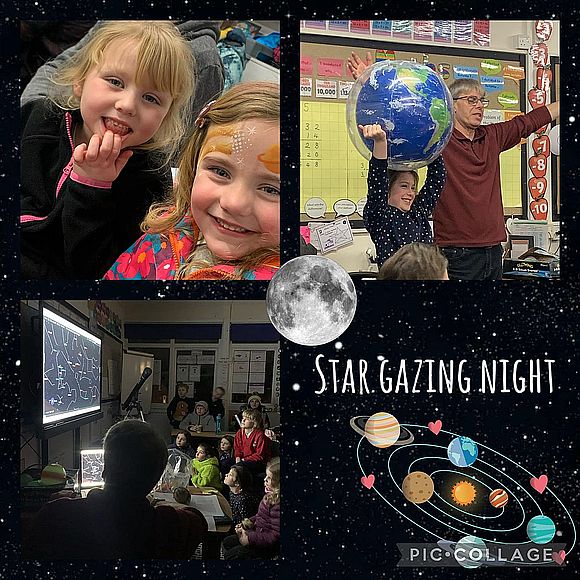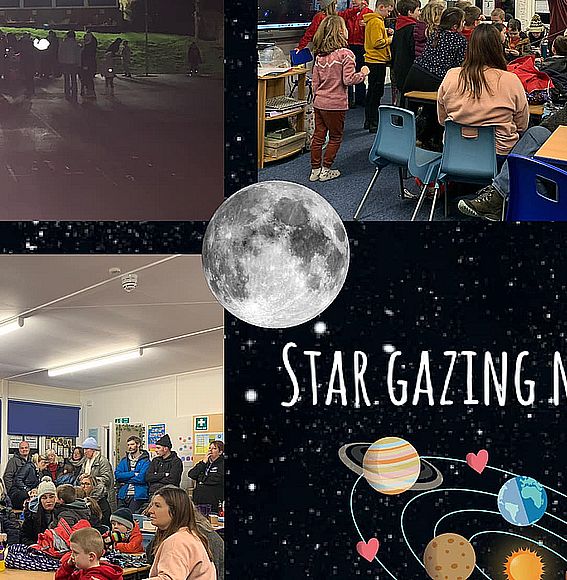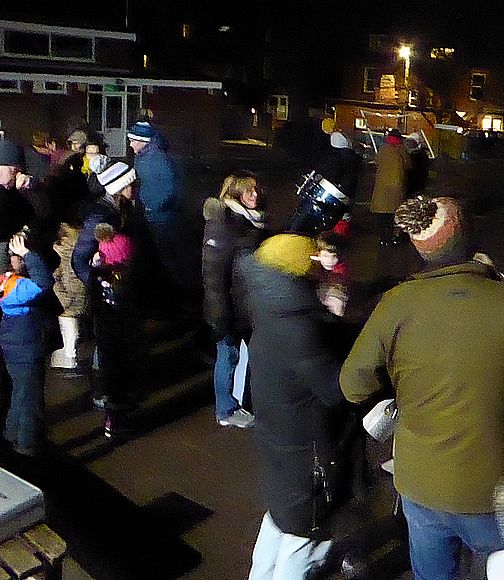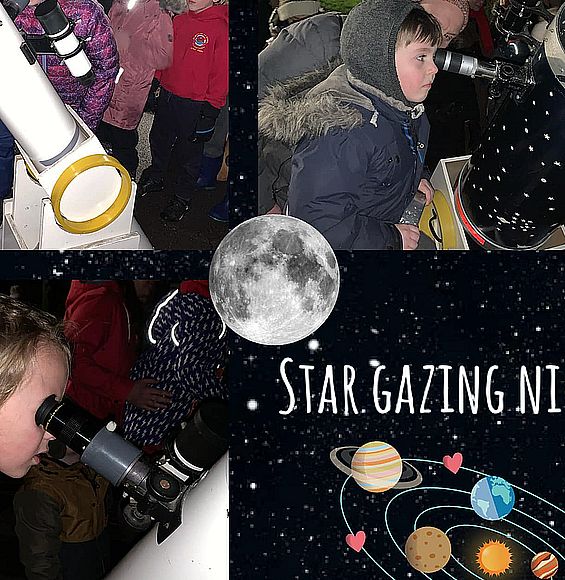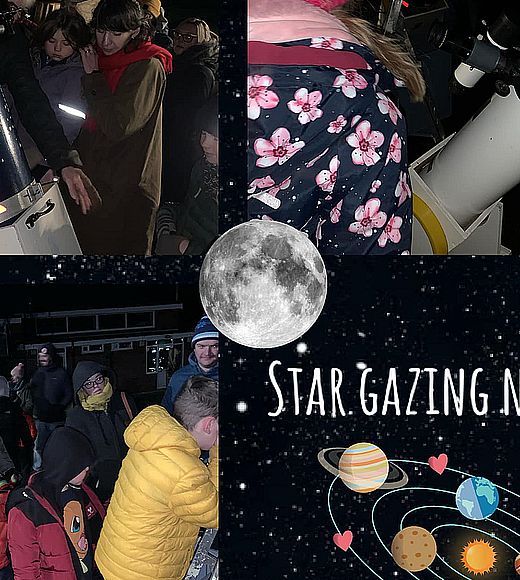On the face of it several factors were at play for the event at Fylingdales primary School not to proceed. In the coldest week of winter so far, snow had carpeted the district, just when it seemed the white stuff would not be paying a visit. Fortunately, on the day of the event (Jan 19th), temperatures lifted somewhat to a 'balmy' 5 degrees allowing a thaw to take hold, easing worries of getting there. With various key society members not available through a multitude of reasons, Mark decided to ‘fly solo’ (he'd been sidelined earlier in the week - when postponement did look on the cards), but with clear skies forecast for Friday evening, it seemed a good reason not to.
Mark (with assistance) demonstrates a scale Earth-Moon system and shows what the night sky should look like, minus the clouds!
Image courtesy Fylingdales CP School staff. (Click for full images)
Having contacted the school on the morning of the 19th Mark was reassured of a decent turn out and travelled over to Fylingthorpe alone. As usual the weather forecast proved inaccurate, with high cloud all but obscuring a washed-out Quarter Moon, and a hardly noticeable Jupiter. Packing just the two dobsonians for possible observations and a small refractor for display purposes, Mark arrived at the school in decent time and was warmly welcomed by staff, Steph, (Mark's contact at the school) Alison, Molly and Catherine. On entering the main prefab, the room appeared full already, but pupils and parents continued to arrive swelling numbers further. The two dobsonians were left in the car for the time being - given the sky conditions, Mark preferring to concentrate on setting up the IT equipment and associated demo paraphernalia. Fortunately, the IT hooked up to the screen without a hitch and by 6:40pm local time all was ready.
Inside and out, pupils, parents and teachers enjoy 'star gazing night'.
Image courtesy Fylingdales CP School staff. (Click for full images)
After a quick introduction, Mark utilised the planetarium programs, initially highlighting objects that were to be targeted should cloud conditions allow, namely the Moon, Jupiter, and Orion nebula. There was time to undertake a mini scaled solar system demo within the classroom, with plenty of assistance being offered from eager pupils. Following a quick look outside, Mark decided that sky conditions (at least in the vicinity of the Moon) had improved sufficiently to warrant unloading the scopes and setting up in the lower playground. A task soon accomplished with many willing hands, and as order was restored, two long queues snaked away from the scopes in opposite directions around the playground.
Busy scenes on the playground - as people queue to view through the telescopes.
Image courtesy Fylingdales CP School staff. (Click for full images)
Sky conditions in the Moon's vicinity were just good enough to afford decent views of the lunar terrain. The terminator was just crossing over the crater Clavius - a wonderful sight, and with dawn still lying new on the lunar Alps and Apennine Mt chains, the whole vista was magical. Plato and the Alpine valley were clearly defined as was Eratosthenes. I doubt very much anyone knew their names, but they sure did appreciate the view with lots of wow's, cool, and OMG's being expressed. Initially both telescopes were aimed at the Moon (3 in fact as someone had brought along a Meade ETX - set up on a table), before Mark turned the 10" toward Jupiter, which had become somewhat brighter.
Pupils in awe as they view through the telescopes.
Image courtesy Fylingdales CP School staff. (Click for full images)
The image was better than expected with good contrast allowing banding across the disk to stand out, and with all 4 Galilean moons present on one side (Io and Europa particularly close) the view was very satisfying - just as the Starry Night prog had depicted indoors. More gasps of delight.
Queuing to view the lunar terrain and magnificent Jupiter.
Image courtesy Fylingdales CP School staff. (Click for full images)
Pupils, parents, and teachers queued for multiple visits at the eyepieces, their wait worth it judging by the reactions. As time ticked beyond 8:15pm, numbers started to dwindle as younger pupils departed with parents. A few brighter stars did appear from time to time, hints of constellations here and there, but not clear enough for a sky tour of any description. It was bizarre how just the Moon and Jupiter had remained viable observing targets. Mark was satisfied though with how proceedings had unfolded, certainly teachers and parents were grateful, with excited, happy pupils.
Packing everything away in the car, it came as no surprise that skies cleared somewhat, whole constellations becoming visible, and hopefully (you would like to think) being scrutinised afresh by young, eager eyes. It is after all one the reasons we do these events and makes it all the more worthwhile.
- Log in to post comments

